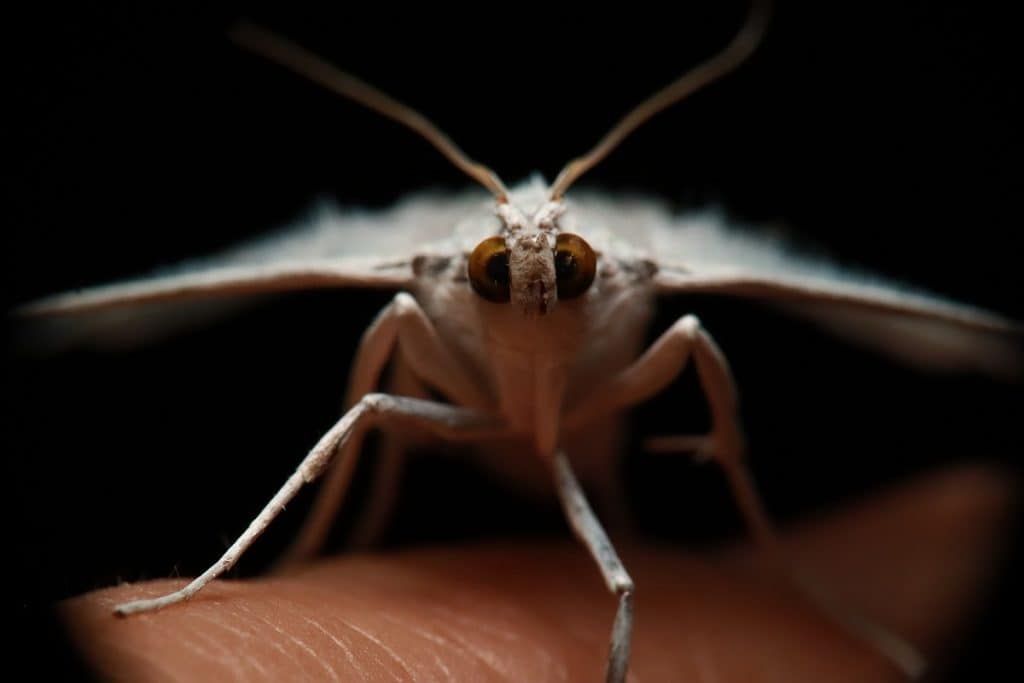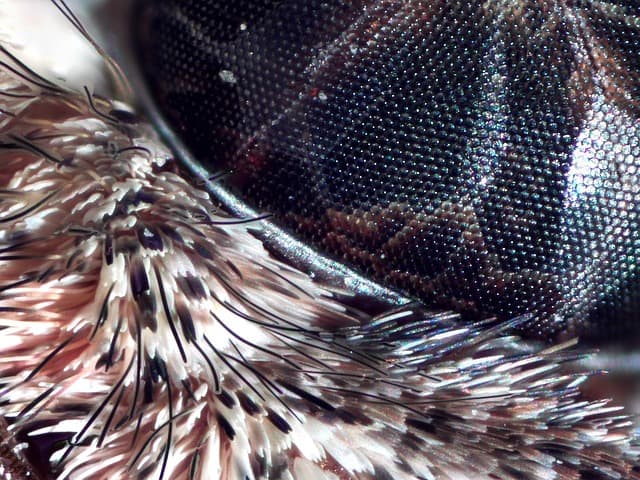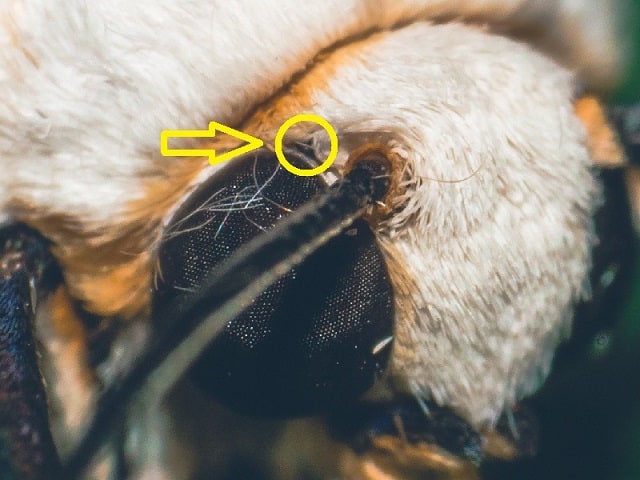Do Moths Have Night Vision How to Draw a Lemur Easy
While moths use the darkness to avoid predators, this comes with some downsides too. Have you ever wondered how moths navigate the landscape in the darkness of the night? So, how has their vision evolved and adapted to aid their survival?
Moths have two different types of eyes. While compound eyes provide a good area of view but only a low acuity, simple eyes can detect motion and colors with more details. Also, moths' eyes have advanced contrast sensitivity, which is essential for moving around at night.

In this article, we are going to put these diverse groups of insects under a microscope. We will look at the exact nature and constitution of their eyes, how different eyes function under different circumstances.
Along the way, we can hopefully dispel some common misconceptions about moths and their visions. So, let's get started and examine the visual capacities of moths.
Moths' Eyes
From a distance, moths and similar insects seem to have the normal number of eyes; two eyes protruding from their head. But take a closer look and you will find just how deceiving their initial impression is.
See, each of the individual eyes is made up of several smaller units. We can divide these units into two types – compound eyes or ommatidia and simple eyes or ocelli.
Compound Eyes
The compound eyes are more apparent as they are larger and occupy much of their orbit. Each compound eye is composed of multiple smaller units called ommatidium. You can think of each of the ommatidia as an individual lens. We humans have only two lenses, one for each eye. But the moth has several.
Each lens captures the light from the area that is directly in front of it. Then the images are transported to their nervous system via an optic nerve. Then the nervous system of moths accumulates all these images and forms a complete picture of the surrounding area.

So, compound eyes are very useful for seeing a large area without turning the head. This gives the moth a nearly 360-degree vision. So, they are able to watch out for predators from all directions. This is very beneficial for surviving in the wild where danger can strike the moth at any time.
Now, the moth's vision is not exactly 360° as they do have a blind spot. Their bodies actually create an obstruction that they cannot look past. So, their own anatomy prevents them from seeing the complete picture.
Compound eyes give a good overview but the image is very blurry.
The downside of this wide coverage is that the compound eyes do not provide good resolution. Sure, they can see many pictures at once, but none of the pictures is very clear. So, these eyes are not good for detecting slight motion or contrasting between light sources.
Simple Eyes
The other type of eye that moths possess is the ocelli. Ocelli are called simple because it only utilizes a single lens for their vision. So, they have a more basic structure compared to a compound eye, which has thousands of lenses working together.

Just because they have the word simple in their name does not mean these eyes are simple in structure or function. Rather, the ocelli in some insects can be very intricate and can even replicate a higher level of vision.
Simple eyes detect colors, motion and provide more details.
"Simple" eyes are mostly there to provide the ability to detect light and to contrast between two close sources of light. This way the moth can distinguish between two objects that are close to each other and as an extension, allows them to detect motion.
The simple eyes have a sharper field of vision compared to the wider field of vision of the compound eyes. So, the moth is able to hone in on a particular area and see it with much more clarity.
Moths are capable of seeing colors that are of a shorter wavelength than us humans. In a broad sense, they can see the colors of yellow, blue, and even ultra-violet (UV). Their talent for recognizing yellow explains why they are attracted to the nectar-filled flowers in the wild.
Are Moths Blind?
Moths are not blind or even color blind. In fact, they have some of the more advanced visual prowess in the insect world as they are able to detect light and motion even at night. This evolutionary trait has changed their behavior significantly.
Insects in general are not blind. Their vision just happens to be very limited. Some cannot see well in the dark while others cannot detect light very well. But moths can do both, which makes them quite unique. They were the first insect that scientists discovered as being capable of nighttime vision.
Can Moths See Color?
Moths can indeed see and distinguish colors. Their eyes have photoreceptors that can sense light of varying wavelengths. Each receptor can sense a different type of color. Within the light spectrum, they can see yellow, blue, and ultra-violet.
Instantly, this is superior to many other insects that can only detect a narrow range of color. Some cannot even distinguish between colors that clearly at all.
Not only that, but their photoreceptors allow them to see colors that are invisible to humans. We are incapable of seeing UV light. But for moths, this ability to see such a short wavelength aids their night-time activities.
As such, many flowers have adapted and brandish UV light reflecting patterns. This way the flowers attract certain pollinators that can perceive ultra-violet such as bees and moths.
Are Moths Attracted to Specific Colors?
The research done on this particular topic shows that moths have an affinity for white light and ultra-violet light. Both of these colors have a shorter wavelength compared to the light we are used to seeing.
Blue light has also shown great potential for attracting large numbers of moths. As such, bug zappers or traps utilize these specific colors to lure in the insects. You will also see moths hovering around and bumping into street lamps at night. Street lamps typically emit a bright, white light.
(Did you know Where Moths Go During the Day?)
Do Moths Avoid Any Color?
It is less about moths avoiding any particular color and more so about responding less. For instance, moths do not respond much to colors that are of a longer wavelength. As such, colors in the red range generates far less movement than white or blue color does.
Of course, a moth's affinity for any source of light can override this personal preference of color. Even if the lamp is dim or reddish, the moth will still converge to it when that is the only light source around.
But you will reap significantly better results when trying to capture moths by using blue or UV light.
Can Moths See UV Light?
Moths and butterflies are able to see ultraviolet light. In fact, they seem to prefer this range on the color spectrum. Because during various research, UV light was able to gather the greatest number of moths. It might be an evolutionary trait that allows them to see certain flowers and help them navigate the world in some way.
Now, exactly why moths, or other nocturnal animals for that matter, have such a high attraction for UV light remains a mystery.
But the main source of UV light in our little planet is the sun, which is obviously more prominent during the daytime. At night, the available UV light decreases remarkably. Almost all the species of moths are more active during the night. So, it is perplexing as to why they would develop such an affinity for this light.
The benefits of this trait are a bit clearer, although more research is still necessary. Many flowers have specific patterns that can reflect UV light. So, even in the dead of the night, a moth can locate these flowers for their nectar.
Seeing the UV light in nature can also potentially explain how they can navigate while flying. The ability to distinguish between two objects by comparing the light they reflect is how most things detect motion.
Of course, this particular feature of the moth can be taken advantage of. Most bug zappers or bug traps utilize a UV light-emitting bulb. The moths are pretty much incapable of resisting the allure. So, they fly straight towards the traps and end up getting fried by the subsequent electric shock.
Do Moths Have a Good Vision?
Depending on who you compare their vision to, moths can appear to have very good or poor vision. If you put their visual prowess against many other insects, they clearly come out as victors.
Moths can distinguish color and motion. Some insects can be partially or even completely blind to colors. So, you can say moths have very good vision in the vast insect world.
In contrast to human eyes, you can say moths have very poor eyesight in typical terms. They can see at a much lower resolution than us. Meaning they cannot see things as clearly or as detailed as we can.
But what they lack in the resolution they make up for with their wide coverage and contrast sensitivity. Humans have a narrower field of vision and our peripheral vision can only go so far. We cannot look behind us without turning our heads.
Moths can see pretty much everything surrounding them. So, they can move quickly no matter which direction the danger is coming from. Additionally, they can sense light rays that are invisible to the human eye.
(By the way, ever wondered Why Moths Stay in One Place? )
The other noticeable fault in their vision is their failure to adapt to changing light conditions. Moths will usually rely on the moon or the distant stars as a guiding point. Since they are so far away, the intensity of the light hardly changes over a large distance. So, the moth can fly in a straight line for miles without getting distracted, provided there is no other light source.
Now, the moment you place an artificial light source in front of them, they get confused. They are clearly attracted to the bright light. But since it is so near and the intensity of the light is not as universal as moonlight, they try to stay as close to the light as possible.
This failure to adapt from natural light to an artificial one easily disorients them. Hence, you see so many moths bump into headlights or street lights. This is also the same mechanism people exploit to get rid of moths.
How Do Moths See During the Night?
In order to survive the cold and often unforgiving night, moths had to make some adjustments and adaptations. This is mostly seen in how their eyesight has evolved.
The biggest challenge any creature faces during the night is a lack of light. Yes, the moon and stars can and do provide some respite. But these sources are not the most reliable and are frequently obscured by clouds and dense forests.
The way animals see things is with photoreceptors located in the eyes. When photons (light particles) bounce back from an object and enters the eyes, they stimulate those receptors. Then the corresponding signals are sent to the nervous system (mainly the brain) and this system forms meaningful images from those signals.
This is, in very simple terms, how vision works for the most part. So, it is very hard to see at night as there are far fewer photons going around. Neither the moon nor the stars can compete with the sun in this regard. So, nocturnal animals like the moth have very few resources to work with.
To see in this condition, the moths have traded resolution and speed of vision in preference of increased sensitivity. These activities can occur because the neurons of the moth have adapted in such a manner (see here ).
).
Essentially, researchers have found that the nervous system of the moth can add up all of the visual stimuli and form a much more cohesive image. This process is known as summation. This increases the ability of the moth to see at low light levels by a hundred times.
This is how the comparatively small quantity of UV light during nighttime is still visible to the moth. Their nervous system has evolved in a way that allows them to roam the night sky without being blind.
Why Are Moths Attracted to Light?
As the old saying goes – "like a moth to a flame". Meaning one feels an incredible urge to go towards something that may or may not be harmful. This expression is based on an actual phenomenon in the real world.
Phototaxis is a type of "taxis or movement" where an organism shows movement in response to the stimulation of a light source. If they move towards the light, this is called positive phototaxis. And if they move away from the source, it is referred to as negative phototaxis.
If you ever placed a house plant on your balcony or on a window ledge, you might notice how the plant curves and bends to get closer to sunlight. This is a common example of positive phototaxis. And another such example is the movement of moths toward the light.
Researchers have identified this as an evolutionary trait that is integral to the survival of many species. In insects, it is still a mystery as to why flies and moths are so drawn in by bright light or even UV light.
One popular theory is that moths use the faint light of the moon as a navigational tool. So, when they encounter another light source, such as a fly-trap or street lamp, they become easily disoriented.
What Is the Moths-Eye Effect?
Some species of moths have very small, protruding structures in their eyes. These appendages are smaller than the wavelength of light. As such, when light hits their eyes, these structures reduce the reflection. This makes it harder for it to be seen by predators.
These structures are called moth-eye anti-reflective structures and this overall effect is referred to as the moth-eye effect.
Many predators hunt by sight. And the large, beaming eyes of many insects make them especially enticing to these predators. So, the moth has developed a way to decrease the amount of light that their eyes reflect. Thus, increasing their odds of survival.
Moths do also have some other incredible abilities to survive, see this:
Does Touching a Moth Kill it? (No more uncertainty!)
Moths And Water And Rain (with Captivating Vids and Facts)
Conclusion
Moths and their visual prowess are a fascinating area of research even today. Their ability to see at low light levels and anti-reflective properties could pave the way for future technologies that benefit mankind.
Source: https://pestabc.com/moths-vision/
0 Response to "Do Moths Have Night Vision How to Draw a Lemur Easy"
Post a Comment